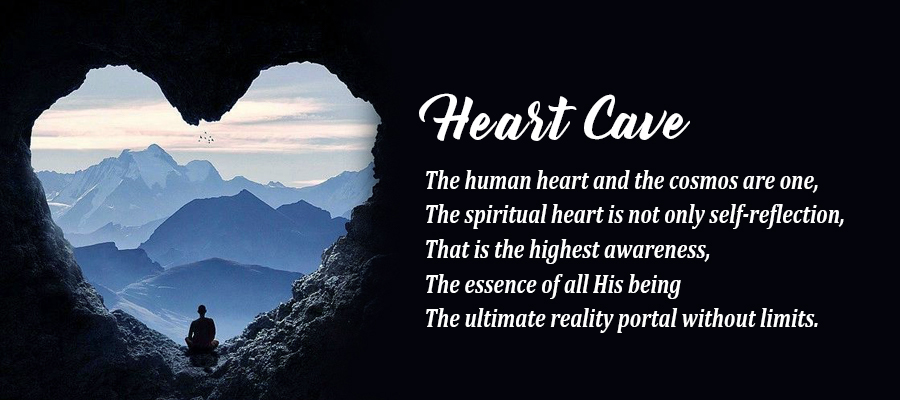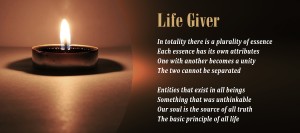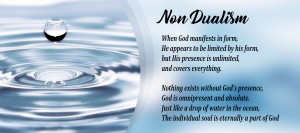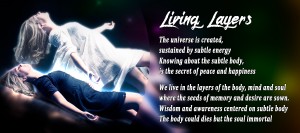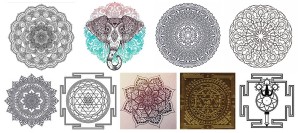- 1The Spiritual Heart is not just the soul and the psychic activity
- 2Hridaya: The Spiritual Heart is not Anahata Chakra
- 3Where should be the natural place of the Witness Consciousness?
- 4The limitlessness of the Spiritual Heart is absolute
- 5The Heart is the Object and Subject meditation
- 6Build perception a subtle organ
- 7The Eye of the Heart
- 8The energy source of individuality
Hridaya: The Spiritual Heart is not Anahata Chakra
According to Tantric tradition, Anahata chakra, the heart chakra, is just a level or dimension of our being and of the entire manifestation. The Spiritual Heart is more than this. Hridaya: The Spiritual Heart is not just a spark of God; the Spiritual Heart is God.
The relationship between atman and Brahman is one of unity. Jnana yogis used to express this paradoxical view by saying that Atman (the Spiritual Heart) and Brahman (the Absolute) are one. “This Atman is Brahman,” otherwise known as “Ayamatma Brahma,” is one of the four Mahavakya or great affirmations (we could say suggestions or powerful ideas) of the Vedic and Upanishadic traditions.
The key to understanding the nature of the essential Oneness of the Universe is to see our Heart – our eternal, undying Self – as identical with Brahman. Another mahavakya appears in Chandogya Upanishad: “Tat tvam asi”, which translates that the Ultimate Reality, Brahman, is what you are. So the Spiritual Heart is not just a reflection of everything. It is the Supreme Consciousness, the essence of everything, the background of existence.
The Whole, Unity, is completely us. In the meditation for the Revelation of the Spiritual Heart, we are all revealing the same Heart, the same Divine Self, the same Ultimate Reality. The Heart of man and the Heart of the world are a single Heart. In this way, we realize our identity with the Whole, with the totality of Life.
If we accept the existence of this area of our body as having a privileged place in revealing who we really are, then, as Ramana Maharshi noted, it follows logically that this is the main point on which our mind should focus while in concentration or during meditations.
Where should be the natural place of the Witness Consciousness?
When we recognize the necessity of being aware of ourselves – of maintaining a witness consciousness – as a fundamental spiritual attitude, it is best to center ourselves in the region of the middle of the chest. This is an important activity and it will help us to understand clearly that the essential awareness of our own being is not a function of reason. It is not the mind or a product of the mind, nor is it ordinary thoughts, but it is a radiance emanating from the region of the chest.
Placing the seat of witness consciousness in the brain is a sterile attitude. The ultimate witness is not the mind or a particular thought. We can imagine in our mind a witness of our thoughts and then we can easily imagine another witness of that first witness of the thoughts, and then a witness of the witness and so on….
The mind can play the game of witnessing. Only if we place the witness consciousness in the Spiritual Heart, in that place of deep intimacy from which arises the intuition of who we are, can we then realize the presence of the ultimate Witness. This issue is not to be argued theoretically by the mind. This is revealed in meditation.
The limitlessness of the Spiritual Heart is absolute
The Heart is limitless and, because it has no form, it can contain totality.
It is important to note that the rapport of something infinite, atman, the Divine Self, to something finite, such as the physical body or a point on or within the physical body, can only be a relative undertaking. Sages like Ramana Maharshi affirm that the awareness of the Supreme Infinite cannot be localized at a certain place in the body and that in the state of divine expansion, of diving into the divine ocean of Consciousness, we can no longer speak of a head, arms, body, and other areas.
However, in the moment of returning to the consciousness of the physical body, when we regain awareness of our physical body, a memory endures of that state and it appears to be connected to the area of the physical heart, in the middle of the chest, slightly to the right. That Divine Infinity can easily be found again by centering in the region of the heart.
The Heart is the Object and Subject meditation
In the object of meditation is not the bodily sensations, feelings, or mind as in another simple meditation way, but rather the Spiritual Heart, Atman, the Divine Self.
However, as the meditation goes deeper, the Spiritual Heart will cease to be simply an object of meditation. We will become aware that it is also the Subject, the witness consciousness, the very profound and intimate Self, the very source of our meditation process. So we will understand that the Spiritual Heart is much more than a concentration or meditation object.
This will help us to know directly another approach to meditation and spirituality.
The Heart will become at the same time the source of attention (the knower), the instrument of knowledge, and the object of knowledge. This kind of meditation is a process that starts from the Heart and returns to the Heart.
The Divine Reality of Existence, the present, the “I am,” resides in the Heart; the cerebral man is a limited man.
Generally, the activity of the mind is governed by intentionality and implicitly is a movement governed by ego; it is an activity that wants to grab information and to “conquer,” to keep control over the objects of activity and the process of self-knowing. When we withdraw the senses (pratyahara) and center ourselves in the chest area, looking for the deepest aspects of our being, we start to search the interior trough the exterior.
In this way, we pass from the usual conquering attitude of the mind to a receptive, contemplative disposition. It is a kind of surrender, which implies lucidity, discernment, vigilance.
There we can still speak about an action, but it is of a completely different nature. It is more like the radiance of pure presence, not an act of the ego.
The last duality that exists in meditation: the void in the mind and the plenitude of the wholeness in the Heart.
Build perception a subtle organ
In this phase, the attention not only derives from the mind. It becomes the attention of a sui generis superior cognitive organ. It is an organ of non-mediate knowledge, jnana, which brings the intimate intuition of what we really are. This new organ of knowledge is formed through the functional identity between the attributes of the mind and those of the Heart.
The attention of mind implies more an attitude of waiting, an orientation toward a state beyond the rational mind, a domain of peace, of sacredness.
Consequently, the premise of the state of surrender is created by an active, superior attention in which the Spiritual Heart is, as we already mentioned, at the same time the source of knowledge (the Knower), the means of attention (this subtle organ of Spiritual Knowledge), and the target of our attention (the object of the attention).
So we can speak about the attention that emanates from the Heart and ends up in the Heart. But in this journey from our individual Heart to God’s Heart, in this Knowledge, jnana, we realize that everything is encompassed, the whole Creation, Brahman, the Absolute itself.
It follows that the real Knowledge, jnana, resides in the Heart, in the very core of our being. The revelation of the Spiritual Heart leads this wisdom to completely penetrate our being and thus it illuminates us with its brightness.
“The ignorant one thinks that the Self can be known by the intellect, but the enlightened one knows that he is beyond the duality of the knower and the known.” – Kena Upanishad
The unity between Bhakti, Love and Jnana, non-mediate Knowledge
The best way of keeping the awareness of the Spiritual Heart is to love. That’s why jnana, the direct knowledge, is so related to bhakti, which means love, devotion, zeal, fervor, heartiness, ardor, adoration, ecstasy.
“God is born in the Heart and the Heart is born in God,” as the great Christian mystic Meister Eckhart said. This vision leads us to understand that there is nothing to be searched in the interior or exterior. God is already there.
The Bliss of Pure Existence, sat, is expanding the soul and the understanding. The Divine Reality is unveiling a mystery of love-awareness.
There is an organ of contemplation known as “the eye of the Heart” or “the intellect of the Heart,” nous. This nous dwells “in the depths of the soul,” representing the innermost aspect of the Heart.
The intellect of the Heart is the highest faculty of man through which he knows God or the inner essences by means of spiritual perception or direct apprehension.
The intellect of the Heart does not function by formulating abstract concepts and does not reach conclusion through deductive reason. It understands Divine Truth by means of immediate experience or intuition.

